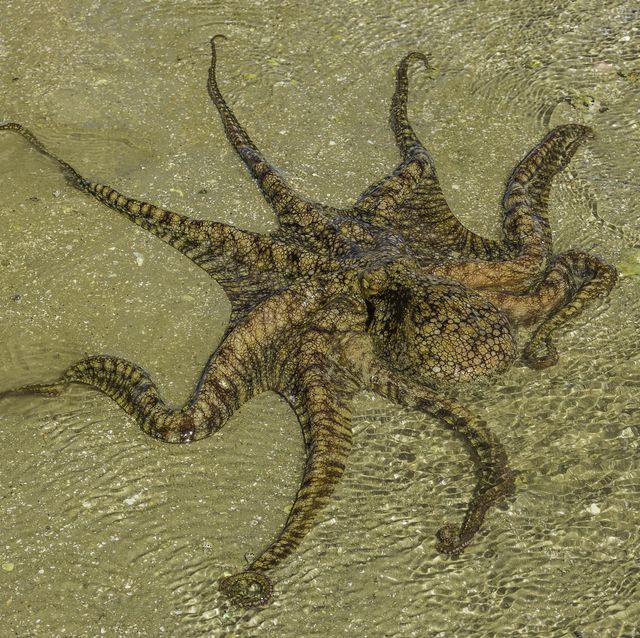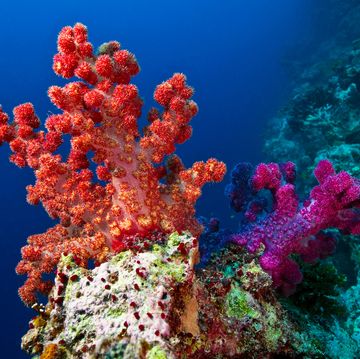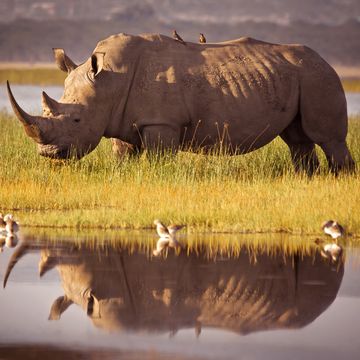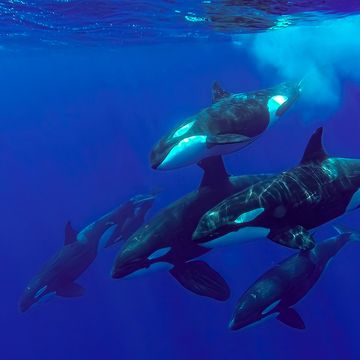- The California Two-Spot Octopus (Octopus bimaculoides), which calls the Californian coast its home, is a small, social cephalopod that’s a popular pet among the cephalopod obsessed.
- However, one family in Oklahoma got more than they bargained for when their bimac octopus laid a clutch of eggs that eventually produced 50 hatchlings.
- Rushing to keep the octopuses alive, the family is hard at work trying to find new homes far from the Pacific Coast.
At only 18 inches long, the California Two-Spot Octopus (Octopus bimaculoides), also known as a bimac octopus, is on the smaller end of cephalopods. This diminutive size, as well as its social nature relative abundance along California’s Pacific Coast, makes the bimac octopus a relatively popular pet among the aquatically-minded.
After contacting a broker via the cephalopod-themed publication Octopus News Magazine Online, Cameron Clifford—a 36-year-old dentist in Edmond, Oklahoma—acquired a bimac for his nine-year-old son Cal, who has professed a deep love for marine biology. With an expensive aquarium set-up in place, an octopus named Terrance arrived in a bag of water via UPS, and soon, the bimac began exploring its new home. Then, something unexpected happened—Terrance laid 50 or so eggs.
While the true gender of Terrance came as a bit of a shock, the family figured the eggs were likely unfertilized and left it at that. But in February, they began to hatch. It’s likely that Terrance mated before being captured off California’s coast, and with a 150 to 210-day gestation period, waited until it was safe enough to lay her eggs. Documenting the entire process on TikTok, the family is now racing against time to keep as many of the bimac babies alive while also trying to find future homes for them—all while the closest ocean is more than a thousand miles away.
Bimacs live incredibly short lives—around 12 to 18 months (sometimes 2 years in captivity)—that are mostly determined by their reproduction cycles. Male bimacs will inseminate a female with a spermatophore (a kind of sperm capsule) and then die shortly after, and a female bimac can lay roughly 70,000 eggs on average.
Of course, only an incredibly small faction of those eggs ever reach maturity (otherwise, this world would be run by octopuses). But according to The Washington Post, 23 of the 50 hatchlings have survived, and the Cliffords are rushing to find them homes. That could be difficult because, according to a Monterey Bay Aquarium who spoke with The New York Times, most pet owners are not equipped to care for octopuses. The Cliffords even admit that they’ve dedicated lots of time and money—and even suffered a small electrical fire—while caring for Terrence. And unfortunately, the babies likely cannot be released into the wild, as it could introduce dangerous pathogens into a wild environment. So far, two institutions have shown interest in taking some of the hatchlings.
While Terrance is still alive four months after laying her eggs, her life will soon come to an end, and it will be up to the Cliffords to make sure that her progeny survive and thrive.
Darren lives in Portland, has a cat, and writes/edits about sci-fi and how our world works. You can find his previous stuff at Gizmodo and Paste if you look hard enough.













